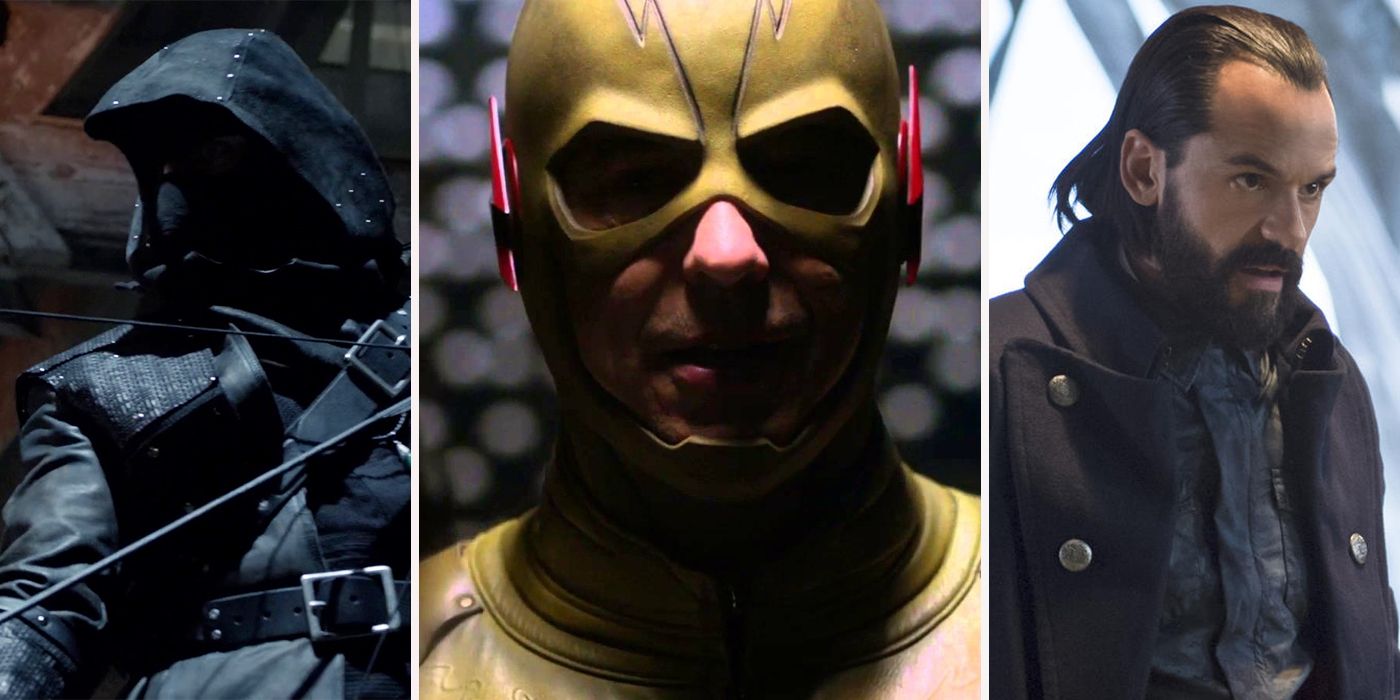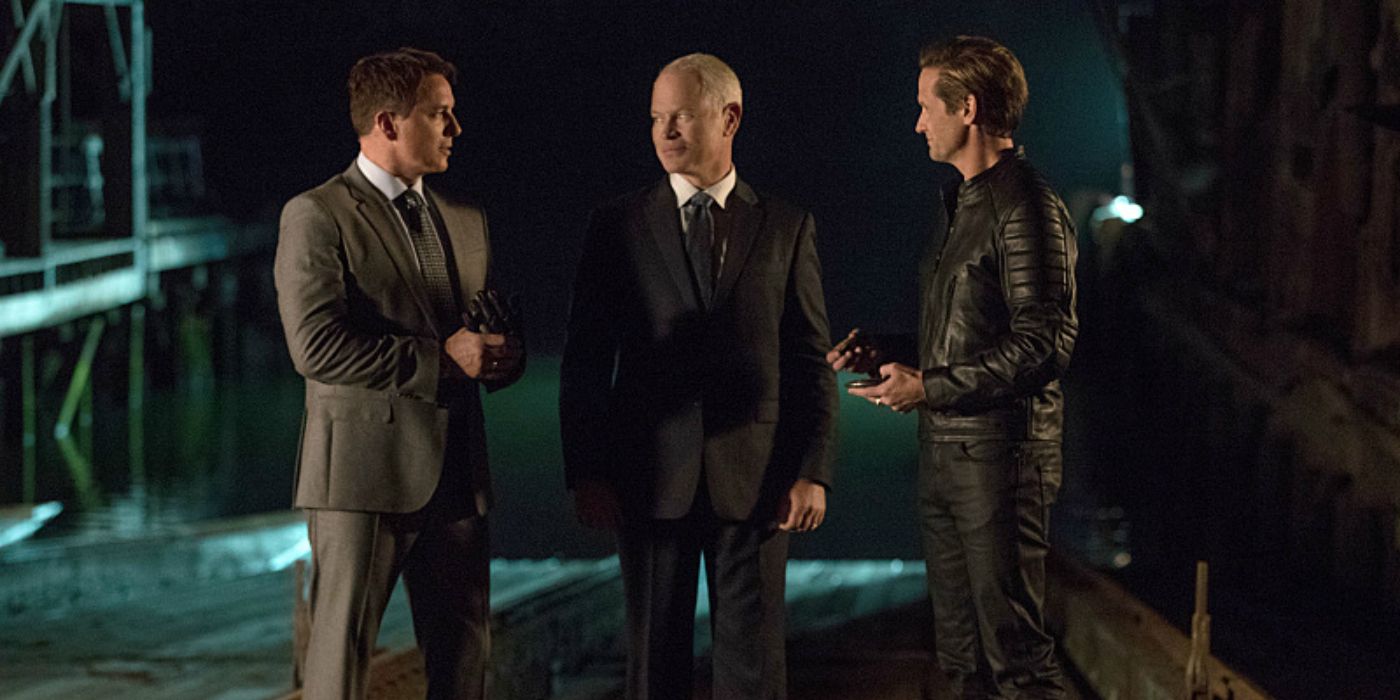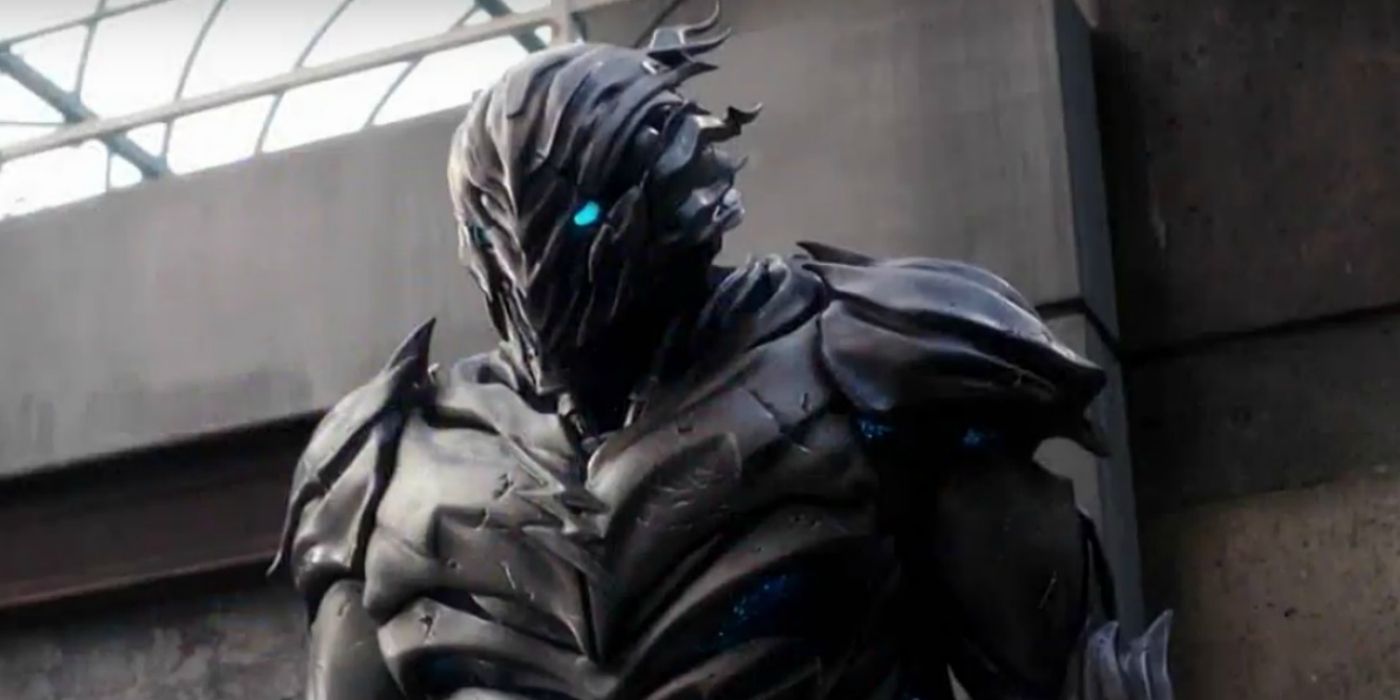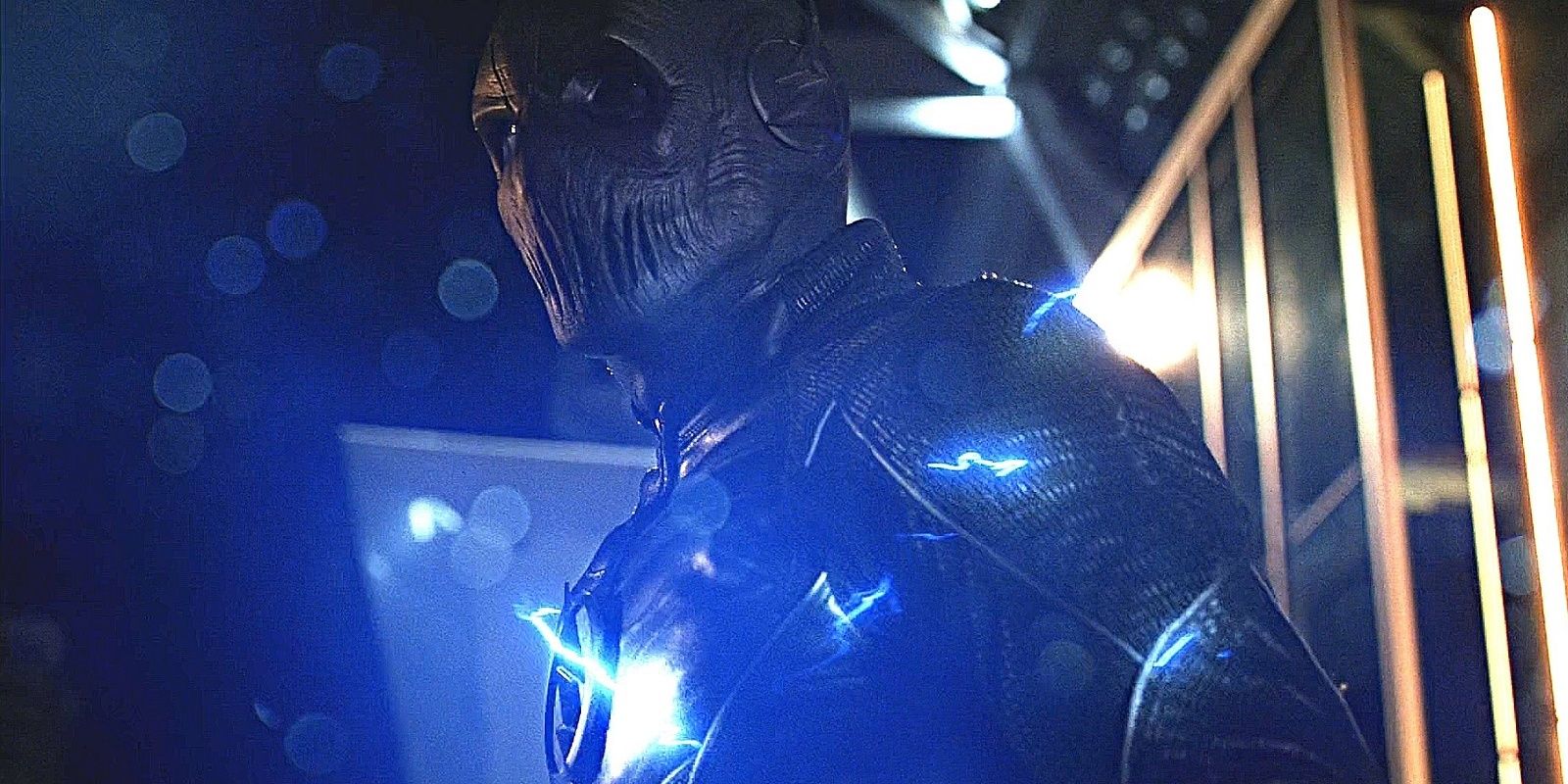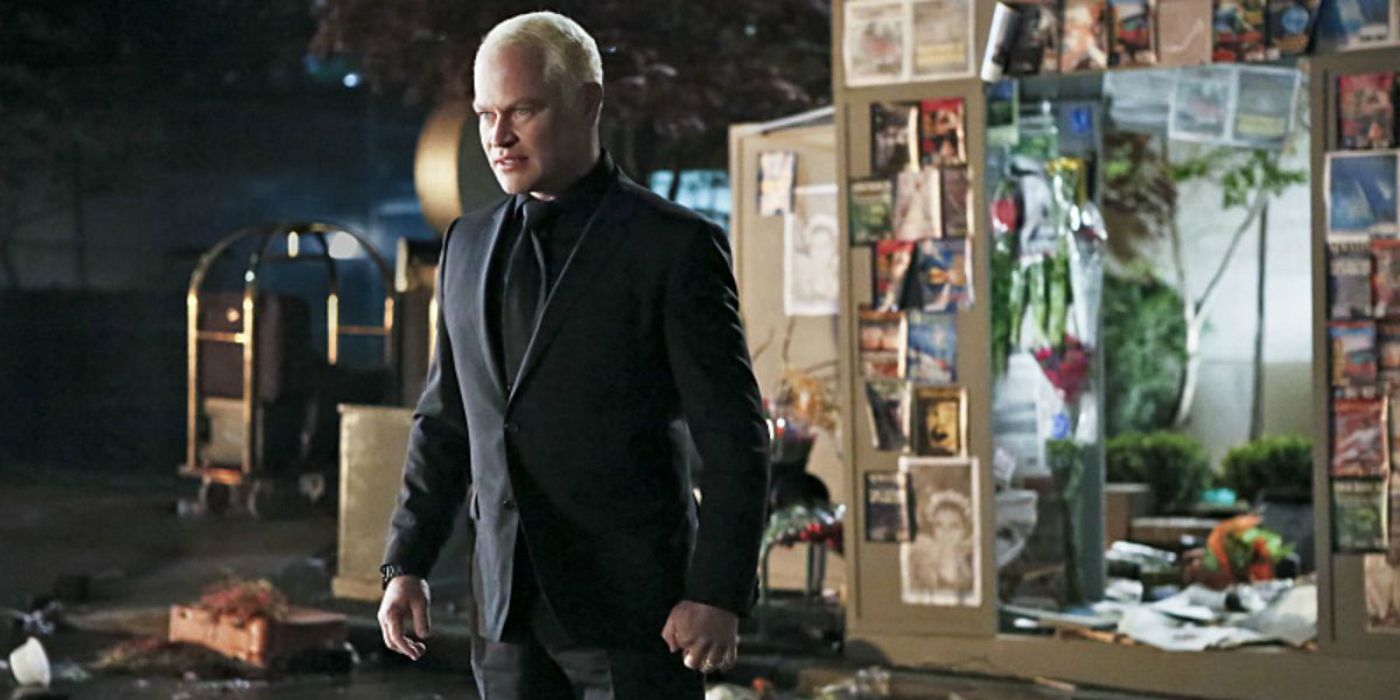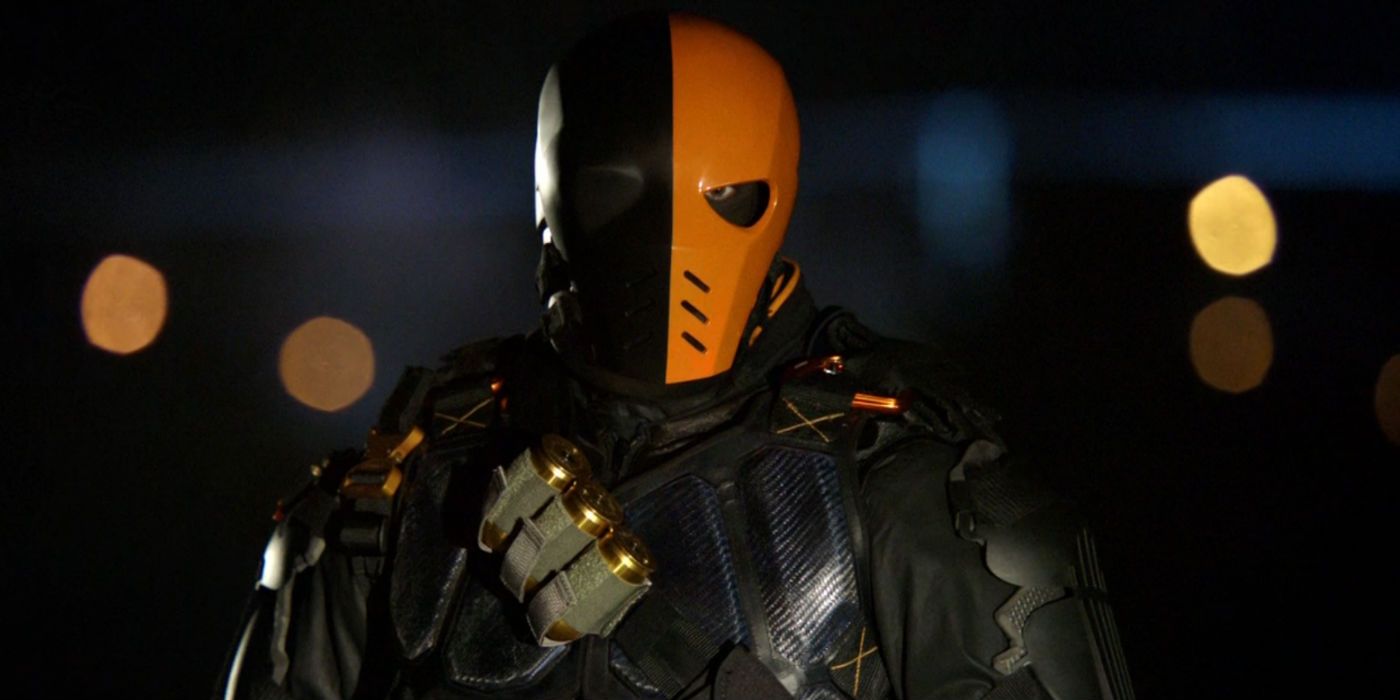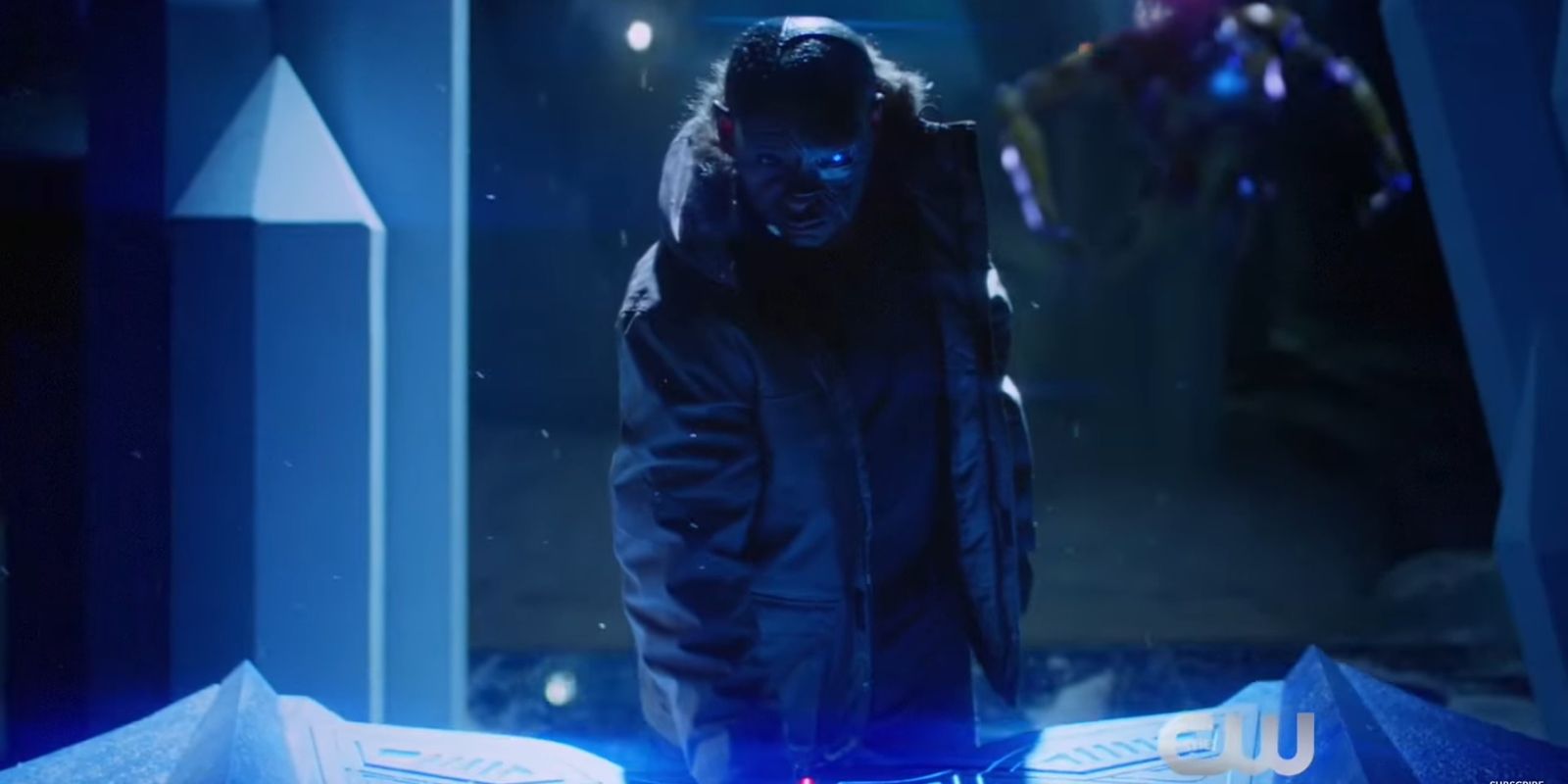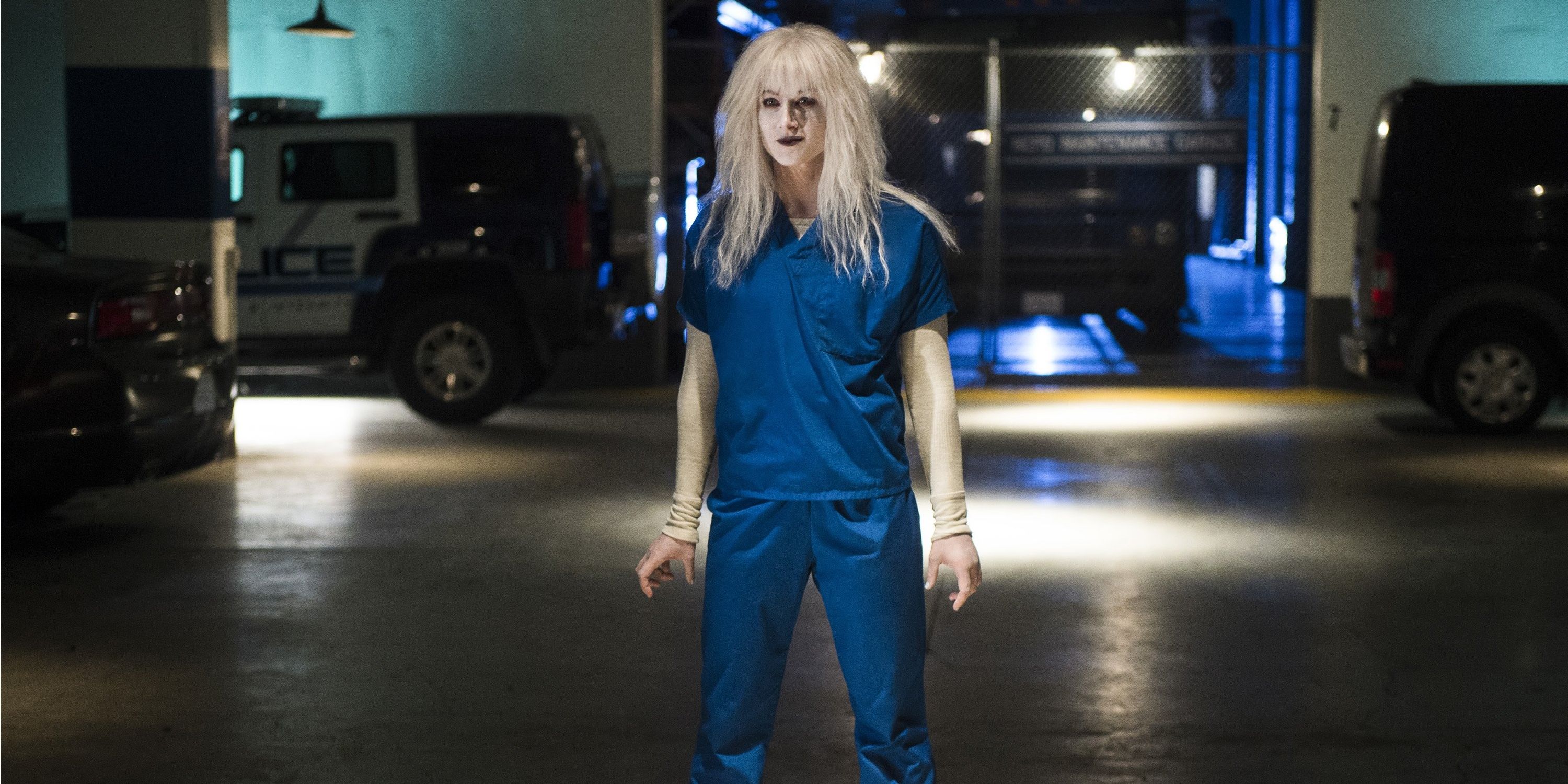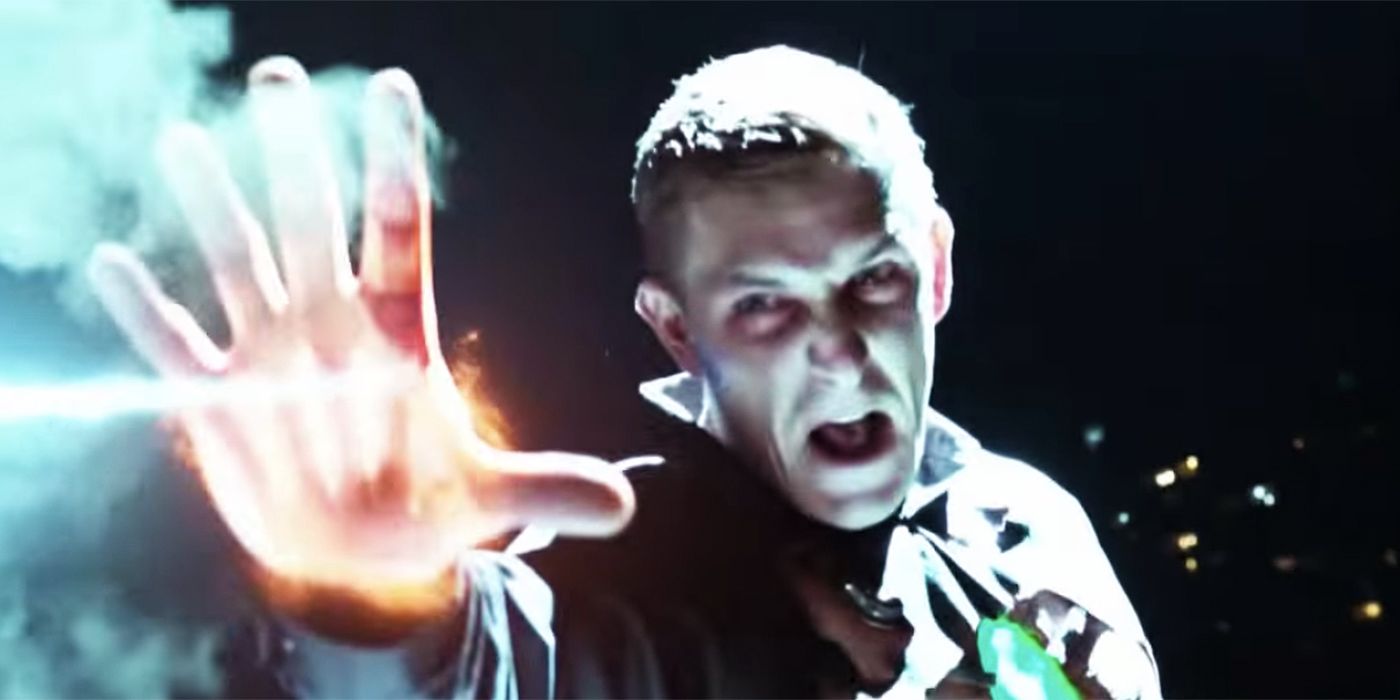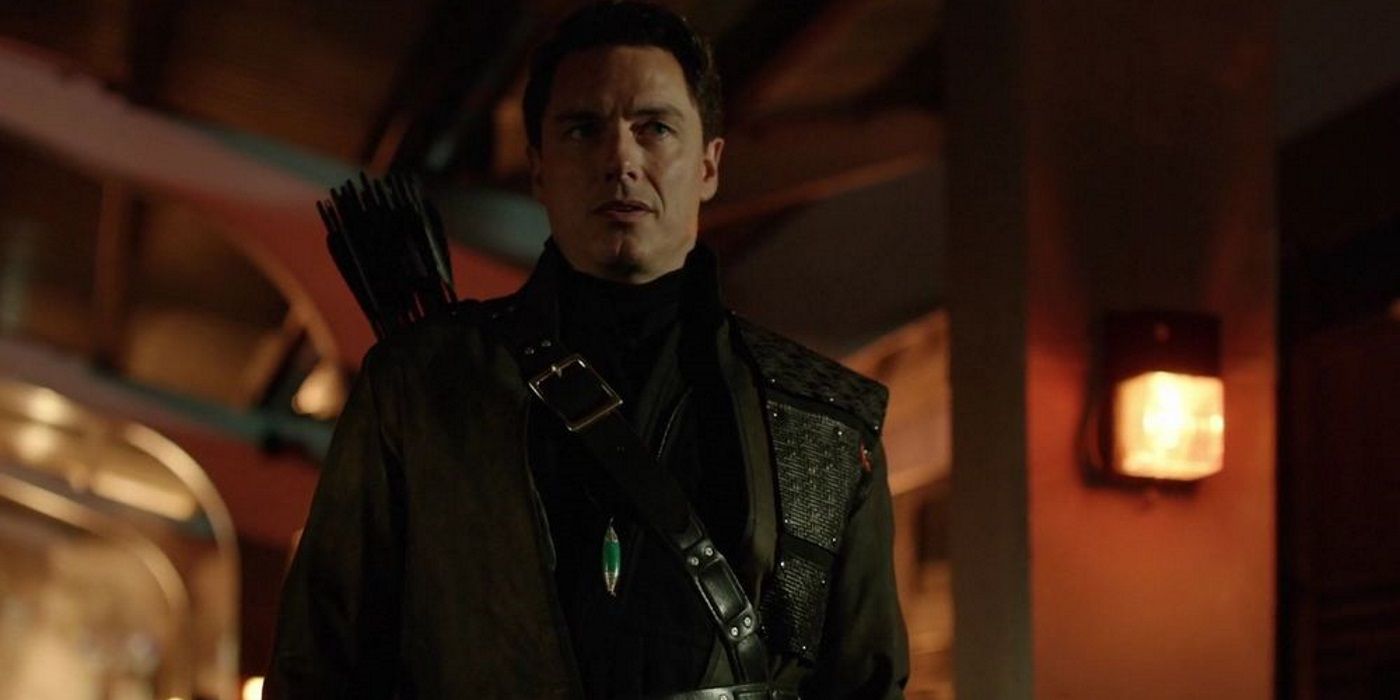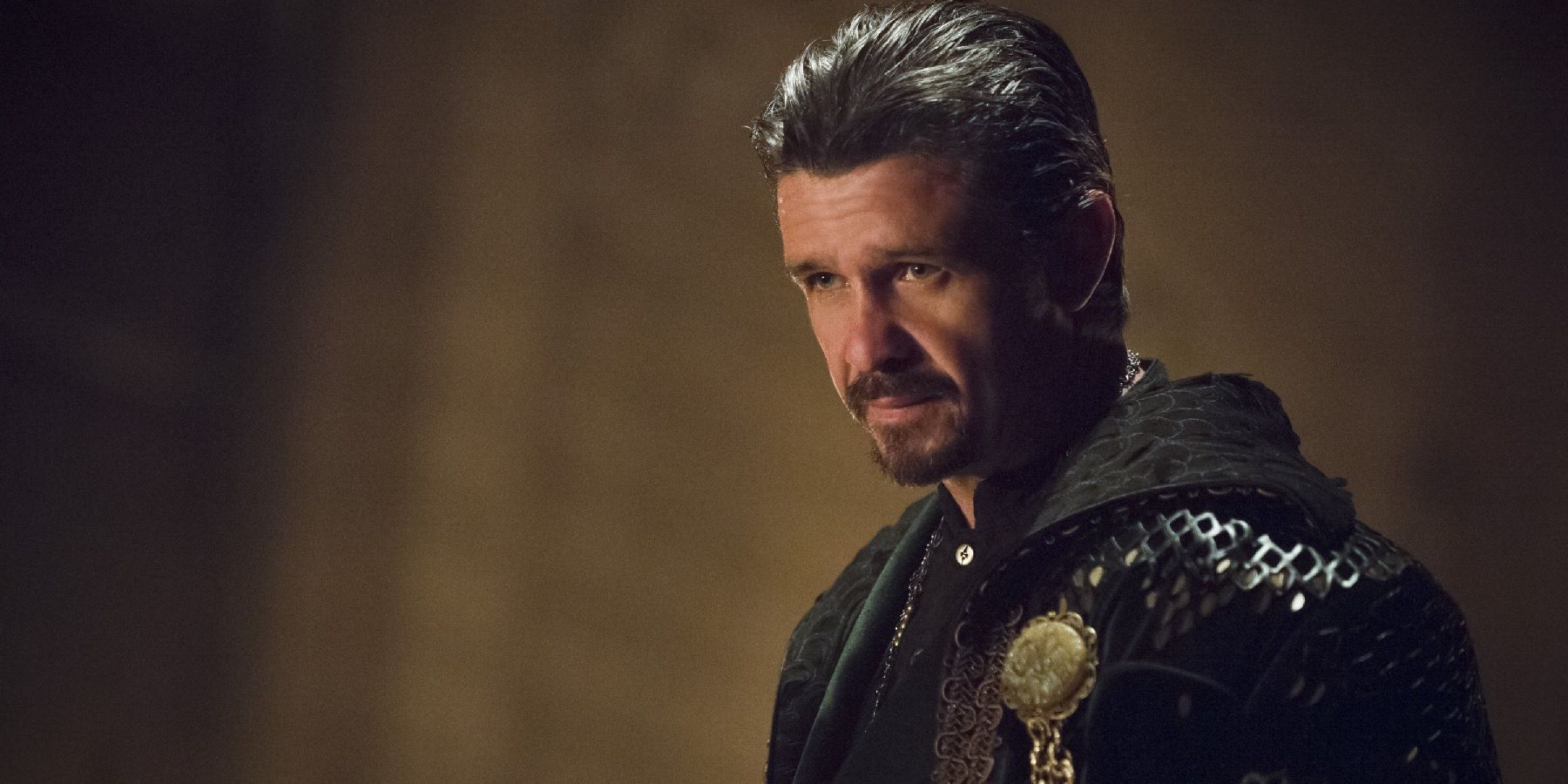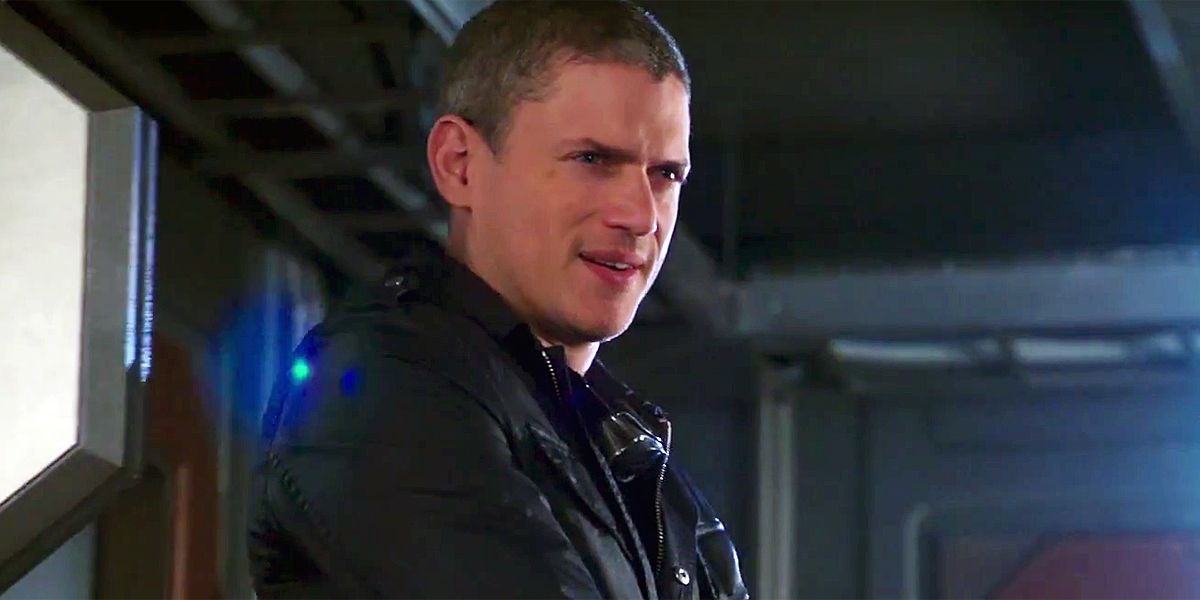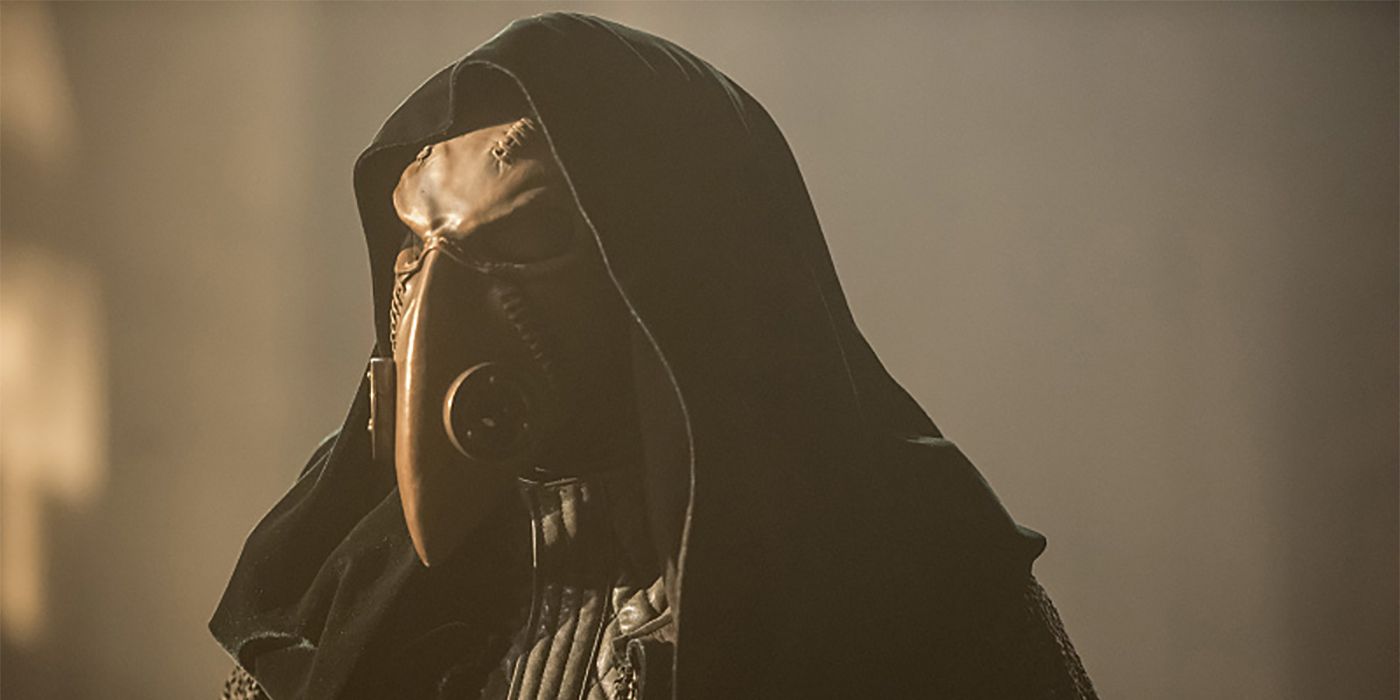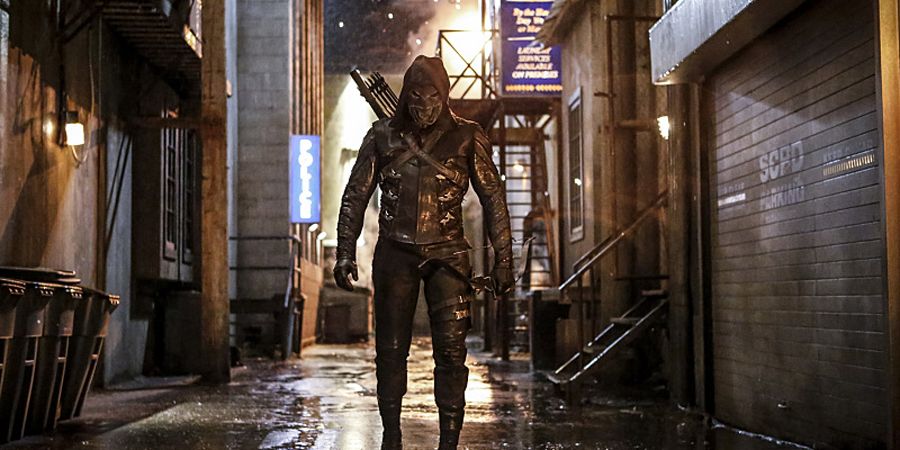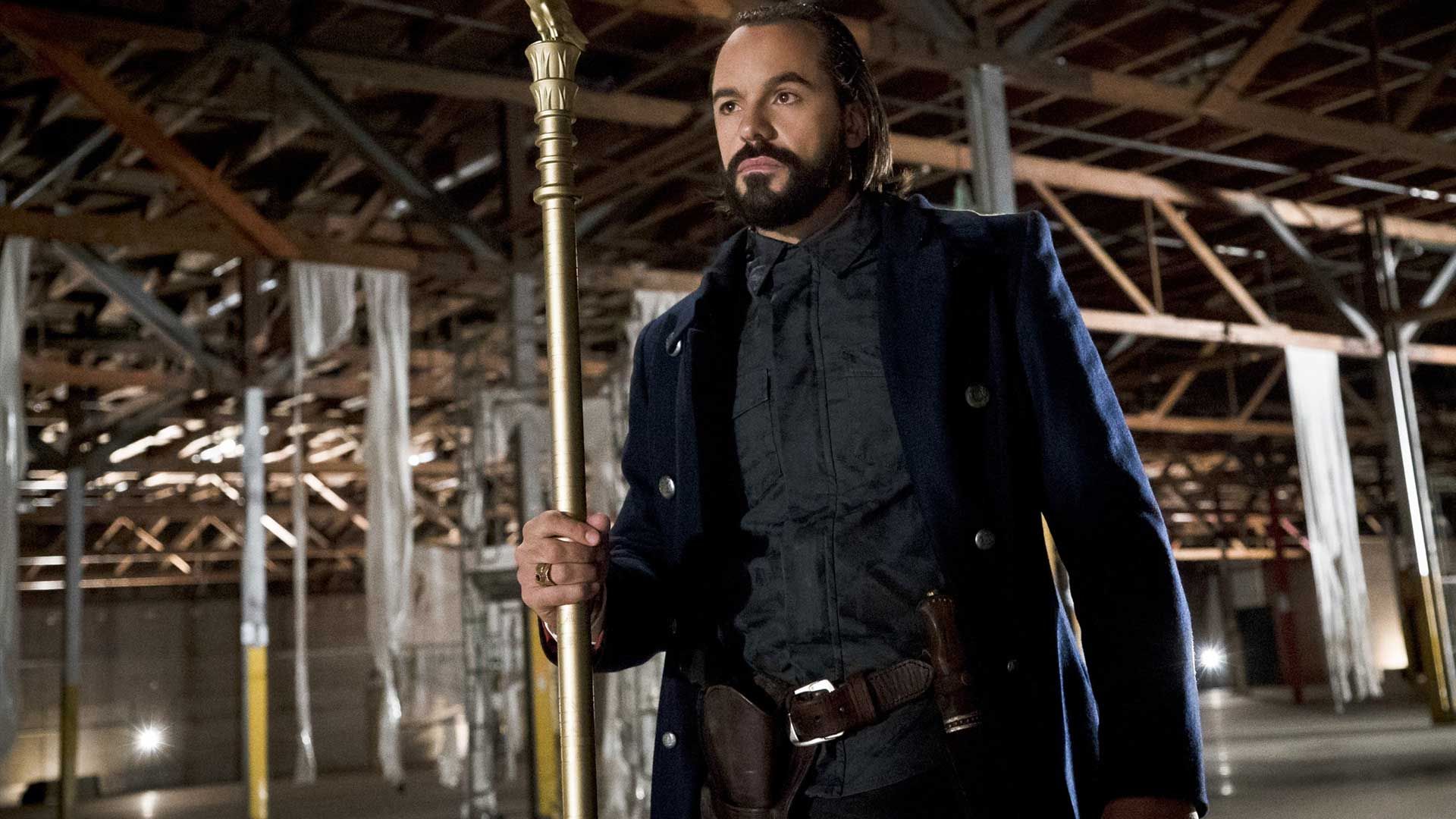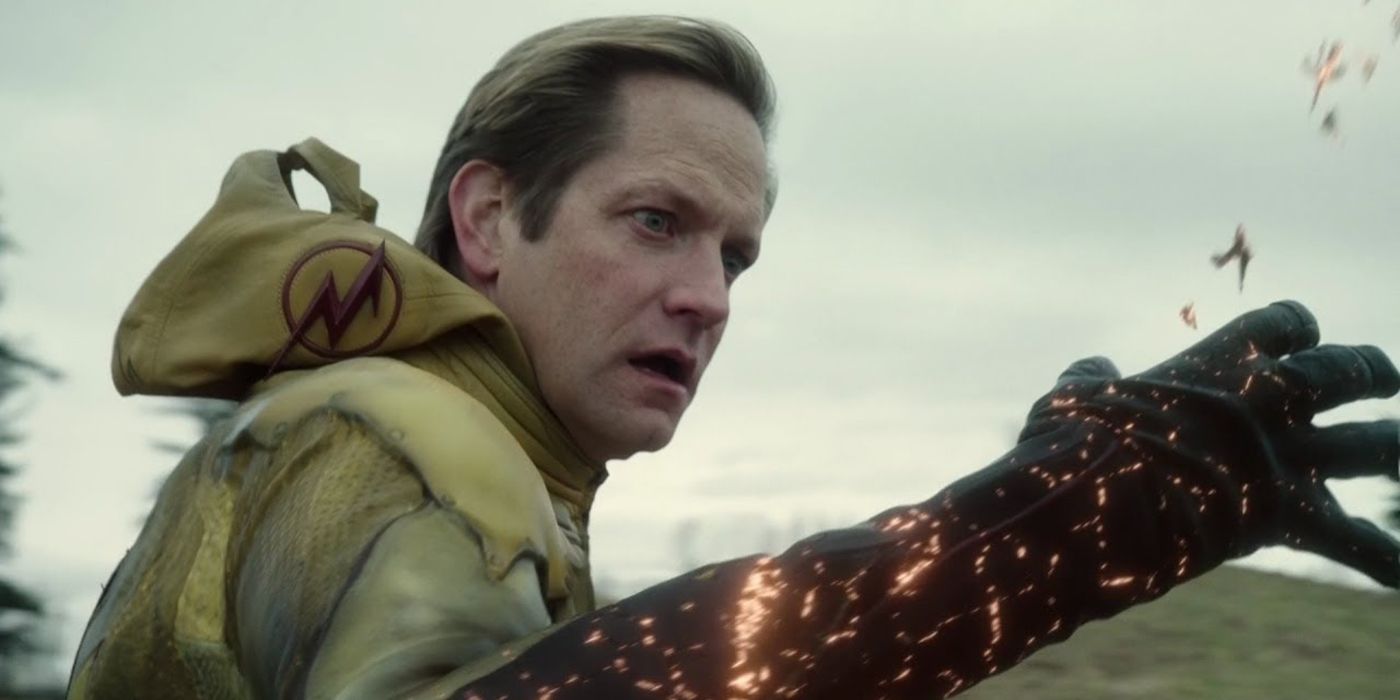Villains and their often intricate complexities can be incredibly difficult to get right; for superhero narratives specifically, an interesting balance needs to be struck in how they are pit against heroes. Physicality is not the only manner in which a villain should excel to be considered a formidable threat. In fact, sometimes physical prowess is of no interest at all. A villainous character’s motives are typically put under a microscope, as is intelligence, personal ethics or code, and how they choose to enact their nefarious deeds. Many villains in the Arrowverse can be simply characterized by the criteria stated above, because story arcs allow them to develop into characters that are just as rounded as the franchise’s most dynamic heroes.
RELATED: 8 Arrowverse Costumes That Are Better Than The Comics (And 7 That Are Much Worse)
However, there are admittedly several Arroverse baddies who comparatively fall short, either due to one-dimensional characterizations or an aspect of their mission and/or motives being exceedingly vague. We want to examine both strongly depicted villains and those who miss the mark. Because the list could stretch to an unmanageable number, only Arrowverse rogues who have been featured in recurring and impactful roles are being considered. Therefore, the villain of the week types who come and go with little fanfare will not receive mention.
15 RIGHT: LEGION OF DOOM
Consisting of villains Malcolm Merlyn, Eobard Thawne, Damien Darhk, and, briefly, Leonard Snart, the Legion of Doom is a culmination of everything the Arrowverse gets right. By combining some of the more formidable big bads from Arrow and The Flash, Legends of Tomorrow’s second season excelled in a way that season one struggled with narratively. The dynamic between the small group makes for arguably the Legion of Doom’s most fascinating trait. Moreover, they’re all unique, bringing with each of them a subset of abilities the Legends have trouble overcoming, especially with a speedster in the mix.
The supervillain team has several subplots acting independently of their search for the Spear of Destiny that also separates them from other main villains in the Arrowverse. These subplots are both interpersonal and intrapersonal, offering them character development capable of rivaling some of the Legends’.
14 WRONG: SAVITAR
Following seasons one and two, wariness was abound with thoughts of yet another speedster causing trouble for Team Flash in the show’s third run. The “Barry must get faster” formula hit critical mass in the Arrowverse’s storytelling, but Savitar’s involvement piqued the interest of many thanks to his comic origins. A cult of followers and an insatiable thirst for speed and its various attributes are all intrinsically tied to the Savitar of Flash lore.
Fortunately, the show translates his power and ambition flawlessly. Where it falls flat is in crafting a mystery about the evil speedster’s identity… and the design of his armor. The intricate details surrounding Savitar’s identity are convoluted with time travel science that consistently borders on confusion with inescapable causal loop troubles. Additionally, his motivations contradict the values of the man hidden behind the armor.
13 RIGHT: ZOOM
Zoom had to follow The Flash season one’s main villain, Reverse-Flash, which is no easy feat. Most would agree he’s one of the Arrowverse’s best big bads, if not the most terrifying. This depiction of the character, who in the comics is frequently another alias of Reverse-Flash, is demonic in nature.
With his haunting masked visage and voice over from demon voice extraordinaire, Tony Todd, the character induced fear in a myriad of ways. Who can forget his dragging Flash across Central City to show citizens their hero weak and defeated? A compelling backstory and a fascinating season long mystery surrounding his identity also elevated interest in Zoom as a character. All of the above eventually culminated in an incredible season finale tease that has since pervaded the Arrowverse admirably.
12 WRONG: DAMIEN DARHK
While Damien Darhk fares much better on Legends of Tomorrow as a member of the Legion of Doom, his Arrow debut in season four left a lot to be desired. Unfortunately for Darhk, he headlined the advent of magic on Arrow; thus, his storyline was saddled with the show abandoning its grounded nature. Generally, the character’s interactions with Green Arrow looked somewhat silly, as a magic force would stop the hero in his tracks amidst a serious scene between the two.
Thankfully, this is rectified on Legends as Darhk embraces the silliness, taking mustache-twirling villainy to a new and exciting level. It works for him quite well, but even in that role he fails to evolve beyond the two-dimensional character on display throughout Arrow’s fourth run. Should he return, it would be interesting if other layers of the magician received exploration.
11 RIGHT: DEATHSTROKE
Deathstroke remains the pinnacle of what villainy in the Arrowverse has to offer, though it can be argued better written villains have come along since he struck fear in the heart of Oliver Queen. Slade’s motives were always questionable, but eventually received an explanation using his Mirakuru dependence as a crux. Regardless of the finer details, his characterization was about as complex as Oliver’s, especially considering the development of their relationship in flashbacks. The extent to which he was willing to take his vengeance added to such complexity.
A calculated man, Deathstroke throughout Arrow season two was a triple threat -- psychologically, physically and intellectually, he was often the Arrow’s superior. Prior to season five, the character’s arc locked away on Lian Yu took an unfavorable turn. Things are looking up for him, though, as season six is set to delve even deeper into the much venerated villain turned… anti-hero(?).
10 WRONG: CYBORG SUPERMAN
The excitement of fans upon learning of Cyborg Superman’s debut on Supergirl was difficult to contain. Such anticipation was swiftly deflated as season two progressed and the real Hank Henshaw acted as Lillian Luthor’s muscle and absolutely nothing more. There exists no intricacy behind the character nor his motives; there’s no explanation for why he adopted the name Superman. In truth, Cyborg Superman is arguably the most one-dimensional of all the recurring Arrowverse villains.
Little of what’s been done with the character in the comics can be properly translated to Supergirl. Thus, changes were expected. But the mask he typically dons and the lack of character development even baffles actor David Harewood. Like many other Arrowverse villains with questionable fates, Cyborg Superman is bound to return; perhaps he will do so in a manner deserving of his namesake.
9 RIGHT: LIVEWIRE
Though she’s probably not the best “nemesis” for the Girl of Steel, as Supergirl chooses to identify her, Leslie Willis/Livewire is a reasonably formidable threat. In season two, she’s given the Captain Cold treatment, wherein her and Supergirl make a deal ensuring her escape, a deal not too dissimilar from Captain Cold and The Flash’s arrangement. Thus, she’s bound to return in some form or fashion.
As far as Arrowverse villains go, Livewire isn’t at the top of the list, yet she’s perhaps the cream of the crop for Supergirl. The character’s relationship to Cat Grant provides an interesting enough backstory, and her electricity powers give each bout with Supergirl a different course of direction. Apart from these facets, complexity is relatively non-existent where she’s concerned. But she makes the list because so few villains can unnerve both Kara Danvers and Supergirl.
8 WRONG: METALLO
Metallo should be the villain Supergirl deems her archnemesis, but alas he receives no such honor. His portrayal in the first couple of episodes in season two, and a later one, is not particularly a miss. However, he seems shoehorned into a complex narrative revolving around Superman’s official debut and the teasing of Cadmus. As such, John Corben is little more than a mysterious hitman for hire before being thrust into the iconic role of Metallo.
Cadmus’ involvement may be the only saving grace, but even that is hampered by another Metallo taking some of the spotlight (in The Last Children of Krypton") and defective Kryptonite. It is likely he’ll return, probably filling a role reminiscent of Metallo’s in Superman: The Animated Series. Should that be the case, it will be interesting to see whether he goes full-on cyborg.
7 RIGHT: THE DARK ARCHER
Malcolm Merlyn has been a mainstay in the Arrowverse since the beginning, acting as the villain of Arrow’s first season, and then reappearing in a number of roles across all of the shows minus Supergirl. Few villains are as menacing as Merlyn, especially considering his close ties to the Queen family. These ties make him all the more compelling, as they allow for narratives both big and small to revolve around his typically hostile relationship with the Queens and, most notably, Thea.
Over time, audiences have watched as the cruel and overly ambitious billionaire has been humbled, navigating several tragedies to varying degrees of success. Though he demonstrates it in the most disturbing of ways, Merlyn’s love for his own family drives a bulk of his decisions. It’s equal parts terrifying and admirable, making him one of the Arrowverse’s most beloved recurring characters.
6 WRONG: RA'S AL GHUL
Ra’s al Ghul won’t be remembered as Arrow’s worst villain, but his tenure as season three’s big bad is forgettable and rarely recalled favorably -- it’s a shame, really. His being a fan favorite Batman villain and essentially playing a role similar to the more famous stories featuring the two drew ire as Arrow’s season three arc began to unfold. To many, Ra’s involvement cemented The CW’s Green Arrow as a knockoff of Christopher Nolan’s Dark Knight. However, this iteration of the Demon’s Head was particularly off-putting because of his poorly cultivated relationship with Oliver Queen.
Perhaps even more egregious, apart from the controversial casting, is that he so easily suffered defeat. Was he formidable? Sure. But did this depiction of Ra’s live up to what’s been expected of him in comics, animation, film, and gaming for the last several decades? The general consensus suggests the answer is no.
5 RIGHT: CAPTAIN COLD
Wentworth Miller doesn’t hold back on delivering Captain Cold as campy as he is usually depicted elsewhere. This camp, though, is imbued with a sinister bent that is both gratifying and eerie. The intonations of his voice, the way his eyes and mouth move when he speaks, and the way he articulates the names of certain characters makes Captain Cold work on a variety of levels similar villains have failed to achieve (i.e., Arrow’s Count).
As one of the Arrowverse’s premiere recurring villains, Leonard Snart is nothing if not beloved. What’s launched his stay into a league of its own is the intriguing character progression that saw him go from criminal mastermind in The Flash to adopting heroic qualities throughout Legends’ first season. Fortunately, the Arrowverse doesn’t seem finished with him just yet.
4 WRONG: ALCHEMY
Many may recall the hype surrounding Alchemy as The Flash entered its third season. Tom Felton had been cast as the mysterious Julian Albert, and Saw’s Tobin Bell would provide the voice for Alchemy. Another intricately woven narrative akin to that of Zoom was expected of season three’s big bad. However, Alchemy’s identity was hardly a mystery.
Ultimately, it was a matter of how his mask would come off and the motives influencing the man wearing it. Both proved interesting enough thanks to his aptly written dissociative identity disorder, but as a threat, the character fell short. Once the menace of Alchemy was removed, his character’s involvement in the story became spotty. He’d appear frequently for a while before vanishing, evidence of there being little room for him outside of a villainous role.
3 RIGHT: PROMETHEUS
For the first time since season one, Arrow’s main villain was a mystery to be solved. Season five returned the show to its grounded roots, and with it reintroduced the weight of a captivating villain who posed a threat rivaling Deathstroke in season two. Prometheus, similar to Slade before him, was a foe capable of psychologically, physically and intellectually challenging Green Arrow. A deeply personal vendetta drove Prometheus’ madness, allowing for attacks against his enemy to reflect his intentions. As such, Oliver, and not Star City, received the brunt of the pain the villain’s vengeance wrought.
His character development was also incredibly strong, not to mention the phenomenal job of the actor behind the mask who never failed to own every scene in which he took part. Here’s to hoping Prometheus isn’t an anomaly -- his season five arc truly returned Arrow to the excellence of its first two outings.
2 WRONG: VANDAL SAVAGE
Several things plagued Legends of Tomorrow’s divisive first season, chief among them being Vandal Savage. As one of DC’s most famous immortal figures, Savage’s arrival in the Arrowverse was expected to embark the characters on an epic new venture. To be fair, a new venture fans did receive, yet epic it was not. The character’s close ties to Hawkgirl and Hawkman severely hindered his characterization; by proxy, much of his overarching narrative was crippled as well.
Vandal Savage, despite being a thrill to watch thanks to Casper Crump’s portrayal, often felt like more of a grand idea and less of an actual, tangible threat. His obsession with the Hawks bordered on absurd, as his connection to them was superfluously woven into nearly every major plot point, which in turn took away from their strengths as individual characters.
1 RIGHT: REVERSE-FLASH
Reverse-Flash in any timeline is consistently fun to watch. Setting the tone for The Flash’s first season, he, similar to Deathstroke on Arrow, helped define Barry Allen as a hero. For Barry, everything begins with Eobard Thawne; it will be a wonder if it doesn’t eventually end with him as well. As a villain, Thawne checks all the necessary boxes. He’s threatening, terrifying, has an interesting backstory, and always manages to subvert expectations. His arrogant, know-it-all personality is also eloquently developed, which made his transition to Legends fitting as he was paired with the likes of Malcolm Merlyn and Damien Darhk.
Most intriguing is watching one of the Arrowverse’s more formidable foes shake in terror at the sight of another, Black Flash. It’s a small touch, but Thawne balancing an exertion of authority and the sensation of fear concurrently is an arc seldom explored with villains.
What are your thoughts on the Arrowverse’s many villains? Let us know in the comments!

